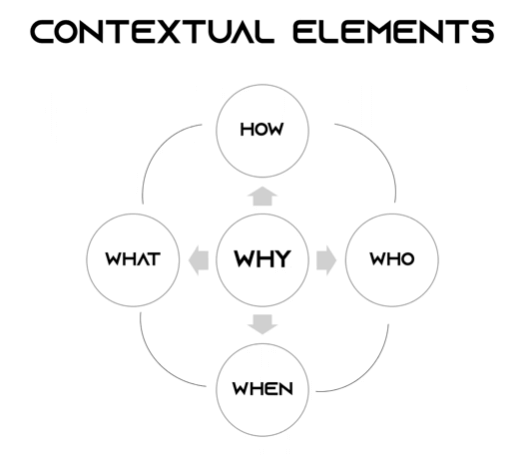*At the time of this presentation, Nate Fiedler was Customer Retention Strategy Manager at Box*
One of the best things to come out of COVID, for me personally, has been the ability to slow down and be more mindful of the present. This has helped me take the time to better understand the context of things I might have previously tried to understand at face value.
I’ll share a framework of essential contextual elements and explain how applying these to our work can help us better understand context with our customers and ultimately, see the bigger picture.
My name is Nate Fiedler, I'm the Customer Retention Strategy Manager at Box. Box is the leading cloud content management platform that powers how the world works together.
Box has more than 97,000 customers and 68 of the Fortune 500 including some of the largest and most security-conscious companies in the world, like the DOJ and Coca Cola.
We have a world-class customer success organization with some truly inspiring and visionary leaders.
I'm a husband to my wife, Sam, and a father of three - two boys, Owen and Bronx, and a puppy named Jax.
In this article, I'll focus on:
- The outcomes of customer success
- How customer success is evolving
- What context is
- Contextual elements
- Why context conquers everything
Before we go any further, I actually want to take a step back and share something really interesting that I found. It's a new pastime that I've developed and I'm actually pretty pumped to tell you about this.
Marble Sports
Your first reaction might be "I'm sorry, who is this guy again? How old is he?" But actually, despite maybe instantly losing any potential of seeming cool for this article, hear me out for just one second.
If you watch Last Week Tonight with John Oliver, you're probably already in the know about this.
With COVID-19 we've had to find new ways to introduce historical and institutional norms into our societies. Marble Sports is of course something that could be normalized as something new, and maybe long-lasting.
Because Marble Sports is, of course, something that can be practiced with social distancing, intentionally or unintentionally. It also captures the competitive spirits of sport with the personification of the Marble's as individual players, a part of Marble teams, which is actually pretty cool.
They have their own background stories and all that stuff, it keeps it pretty engaging.
All sports are rooted in statistics and the Marble Sports league perpetuates this practice with team performance stats on different Marble courses. I think it really caters to people who love the concept of sports.
It comes at a time when we need it the most, when we need a sense of normalcy, at a time when we're missing out on things like the NHL, MLB, and NBA.
I'm done nerding out, let's take a pivot and talk about customer success.
Customer success
Outcomes
The future of customer success is rooted in outcomes. If you're in the customer success space, this should be no surprise to you. You hear business outcome management, effectively all the time, everywhere. But why?
Companies have to justify their value in ROI terms, it has to pass the CFO approval test, ROI must be quantified.
Before, contextually speaking, for those of you that may not be as familiar with customer success, software companies typically led with feature and functionality. We're talking pretty much exclusively about B2B SaaS software.
Software companies would lead with what features and functionality their software could provide and then secondarily, would focus more on the customer's business. The causal effect to that created more of a transactional relationship between software sellers and buyers.
How is customer success evolving?
It's evolving with things like success plans and business reviews.
Who's typically involved? You have all sorts of senior executives, you have junior executives, individual contributors, customer success managers, consulting resources, and it runs the gamut of folks in the B2B space.
Now more than ever, in a world of uncertainty, this need to prove outcomes is absolutely pivotal. With budgets being thrown out the window, forecasts being very unpredictable, there's a lot of unknowns.
The ability to deliver upon business outcomes has become more crucial than ever. But even still, as simple as this may sound, it's easy to lose sight of what genuinely matters to the customers we serve.
Let's face it, life gets busy, personal life, work-life, we constantly have what feels like at least a dozen things competing for our attention at any given moment.
Even when you find time to focus on one specific thing…
It's harder to understand how that fits into everything else in the world around us.
So to take the time to truly understand what's going on, within the backdrop of everything else, is getting increasingly harder to do.
What is context?
Before I go any further, let's align on the definition of context.
According to Webster, context is the circumstances that form the setting for an event, statement, or idea, and in terms of which it can be fully understood, and assessed.
Let's dive into another way of thinking about what Webby was trying to tell us - contextual elements.
Contextual elements
Context is the sum of contextual elements that create value and is greater than the sum of its individual parts.

Still, each individual component of context bears equal weight, it should not be overlooked. When I think of the essential contextual elements, here's what comes to mind.
Why
Why is in the driver's seat for context, it's ultimately the crux behind every decision we make. However, why alone cannot give us all the information we need to understand context.
What
What was done before? This helps us inform what might be done next.
Who
Who is ultimately impacted?
When
The timing of when denotes some sense of priority.
When you leverage this framework, you create a superpower capable of breaking down barriers of the unknown.
An example
Let's look at a hypothetical example. Let's say you're a customer success manager, and you have an existing customer in the baking industry. One of the services you provide is mortgage lending, you discover a potential opportunity where your solution could be the perfect fit for a customer's problem.
This is really good, right? If you can help your customer process more loans in a year, they'll be able to account for more earnings per year.
It'd be really easy to take the easy path and just jump in and shoot straight for the customer and say "I have something, I have a solution that's going to fix your problem". Odds are, you might be right.
But you have to resist the temptation to jump into the solution. This all goes back to the forest image - if you're not looking at the forest around you, you're not understanding what is going on in the broader context of the situation. We need additional context.
Using the different contextual elements let's start with, why are you interested in improving your loan origination process?
Why
It could be pretty self-explanatory, but in this particular moment, you could begin to understand different things like an actual set of metrics so you get an understanding of how the customer is measured, and ultimately, what loan processing would do for the general business if you were able to increase or enhance that process.
What
What were you doing before? Why would you even consider looking into another solution? What about the process today is not working?
How
Then understanding the how - how have you thought about improving the process for the future?
This helps you better understand how the customer has considered the problem and helps you get an understanding of their understanding of the different solutions that could potentially address this problem of loan processing.
Who
Who's involved? Which teams are impacted by loan processing?
This gives you an idea of the scope of who your solution could be addressed for.
When
This helps denote a sense of priority.
- Are there other things the customer needs to be solving first before they get to this?
- Is that an additional opportunity for you to help the customer realize value in a different way that you originally hadn't thought of outside of loan processing?

Again, collectively, if you have this framework to try to better understand context with your customers, it helps you see the bigger picture.
You're no longer just looking at an individual leaf, you're seeing the entire jungle around you, which helps you navigate through serving your customers’ needs in a much more effective way.
It allows you to stay present in the situation and not jump ahead of yourself and lead with what you want to talk about but rather letting the customer's sense of direction dictate how you engage with that customer.
Context conquers all
Whether you apply this process for current customer discovery, process discovery, or simply as a framework to better understand the world around you, I hope you take a moment to hold a deeper understanding of your world.
One thing is clear - the past, present, or future of customer success SaaS, one thing is absolutely consistent - context conquers all.
Thank you very much.

